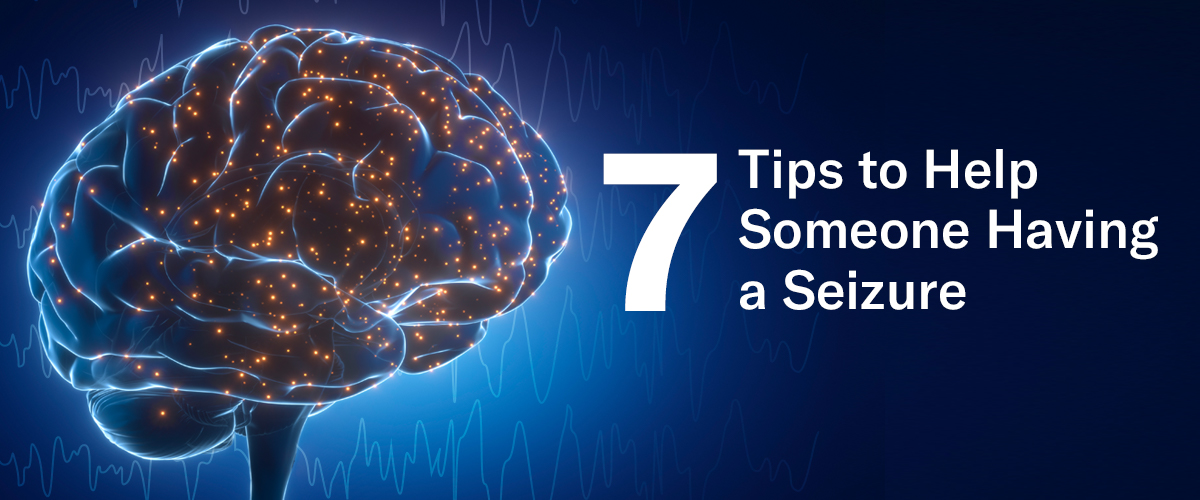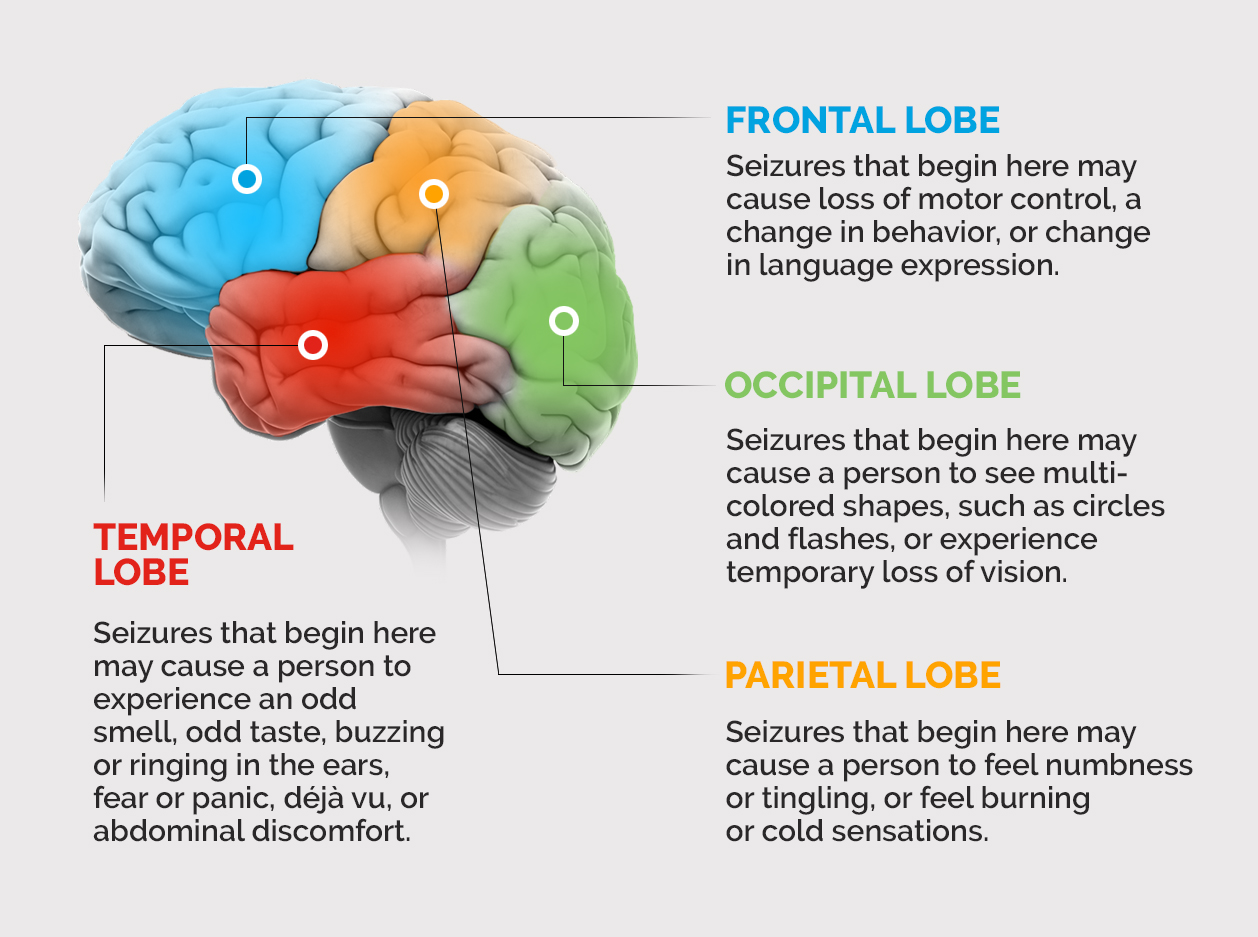Seizure First Aid
A neurologist explains what to do — and what not to do — if you see someone having an epileptic seizure.


Epilepsy, a neurological condition caused by recurrent, unprovoked disruptions in the electrical network of a person’s brain that can result in a seizure, affects approximately 3.4 million people in the United States, according to the Centers for Disease Control and Prevention. Given the prevalence of the condition, it’s important to know what to do — and what not to do — if you witness an epileptic seizure.
“Most of the time, an epileptic seizure will stop in under two minutes, so there isn’t much a bystander will need to do except stay with the person,” says Dr. Asim Shahid, chief of the Division of Pediatric Neurology at NewYork-Presbyterian Brooklyn Methodist Hospital, who specializes in the treatment of childhood epilepsy. “But there are a number of steps a person can take to minimize the chance that the person having a seizure will injure themselves.”
For Epilepsy Awareness Month in November, Dr. Shahid shared tips for what you can do if you are near someone experiencing a seizure.

Dr. Asim Shahid
Make Sure the Person Doesn’t Fall
“If the person starts to have a seizure while standing, try to ease them to the ground,” says Dr. Shahid. Falling and hitting their head is a huge risk factor when someone has a seizure, so helping them to the ground is one of the most important things to do first. Once they are safely on the ground, roll them onto their side, if possible, he says. People can produce a lot of foam and saliva during a seizure, or even vomit, and you want to make sure these don’t go back into their lungs and cause a choking hazard or pneumonia.
Don’t Put Anything Into their Mouth
Contrary to common advice, don’t put something in a person’s mouth during a seizure. They cannot swallow their tongue. During a seizure, a person could clench their jaws and break something that is put in their mouth, like wooden or plastic utensils, or they could break their own teeth while clenching an object, causing a choking hazard. It’s OK to clear things from around their mouth, like wiping away saliva.
With some seizures, the person’s muscles become so stiff they might have difficulty breathing, so their lips may turn blue. The person isn’t choking on their tongue, says Dr. Shahid, but it can look like they aren’t getting air. Once the seizure passes, there will be an air exchange and their normal color will come back.
Keep the Surrounding Area Clear
“Make sure there’s nothing nearby that can hurt them, like sharp or hot objects,” says Dr. Shahid. If someone falls near a fireplace or a hot oven, make sure there’s plenty of room between the person and the dangerous object. Also check that they’re not wearing something that can cause injury, he adds. Loosen their necktie or unbutton the top shirt button if clothing is tight around their neck, and try to remove any long, dangly earrings; necklaces; or glasses.
Types of Seizures

A person will experience different symptoms depending on where a seizure starts in their brain.
Don’t Restrain the Person
Don’t hold the person down, even if their body convulses, says Dr. Shahid. Restraining someone during a seizure can lead to more injuries, such as a dislocated shoulder. Instead, once they are on the ground, put something soft underneath their head, like a pillow or a folded blanket. The best thing to do is make sure the person has space and to let the seizure run its course.
Time the Seizure
While a majority of seizures will stop in under two minutes, anything longer could create a risk to a person’s brain health. “If the seizure has not stopped after three or four minutes, it means the brain doesn’t have the ability to stop the seizure, and that’s when you should call 911 if you haven’t already done so,” says Dr. Shahid. It’s important for the patient and emergency responders to know how long the seizure lasted.
Don’t Leave the Person Alone
Stay with that person until their seizure is over and they are able to communicate that they are OK, says Dr. Shahid. After a seizure, people can get agitated, have a headache, be confused, or need help cleaning up vomit. It’s important to stay nearby, talk to them in a calm manner, reassure them that they are not alone, and call 911 if needed. If this is a person who knows they have epilepsy, Dr. Shahid adds, look to see if they have a medical bracelet that might have information on their condition, what medications they take, and who to call in an emergency.
Always Call 911 if a Pregnant or Elderly Person Has a Seizure
Even if the pregnant or elderly person looks OK or the seizure didn’t last long, call 911. If a pregnant person falls forward it could physically injure the baby, and an elderly person’s bones might be brittle and prone to breaking. Additionally, in a pregnant person, the seizure could cause issues with the blood supply to the baby. Pregnant and elderly people who have a seizure should go to a hospital or emergency room to get checked out.
In addition, call 911 if this is the person’s first seizure, if the seizure lasts longer than a few minutes, or if they have other conditions that affect their mobility or breathing, like cerebral palsy. If a person already has trouble swallowing, or if they suffer from other neurological conditions, the risk of injury following a seizure is greater, so they should receive prompt medical attention.
Epilepsy First Aid for Children
Many of the same tips for first aid apply to being with a child who has a seizure, but you should take extra safety precautions, says Dr. Shahid. “If you are at a swimming pool with a child who’s known to have epilepsy, make sure they’re not swimming by themselves. Make sure someone is nearby who can get them out of the pool and call for help.”
The same is true if the child likes to climb trees. If they are 6 feet up in a tree and have a seizure, that’s a long way to fall, so make sure they are supervised. Children with epilepsy should also take showers, not baths, in case they have a seizure and slip under the water.
Asim Shahid, M.D., is chief of the Division of Pediatric Neurology at NewYork-Presbyterian Brooklyn Methodist Hospital and was recruited as an associate professor of clinical pediatrics at Weill Cornell Medicine. Dr. Shahid has worked as a pediatric epileptologist since 2009 and specializes in the diagnosis and treatment of children with various types of epilepsy and those with multisystem genetic diseases that cause benign tumors to grow in the brain, called tuberous sclerosis. Dr. Shahid has been recognized with multiple teaching awards, is a member of numerous neurological societies, has authored dozens of peer-reviewed articles, and has served as a reviewer for multiple neurology and pediatric neurology journals.
Additional Resources
For more on epilepsy services at NewYork-Presbyterian, visit www.nyp.org/neuro/epilepsy
Learn more about the neuroscience services at NewYork-Presbyterian Brooklyn Methodist Hospital.

